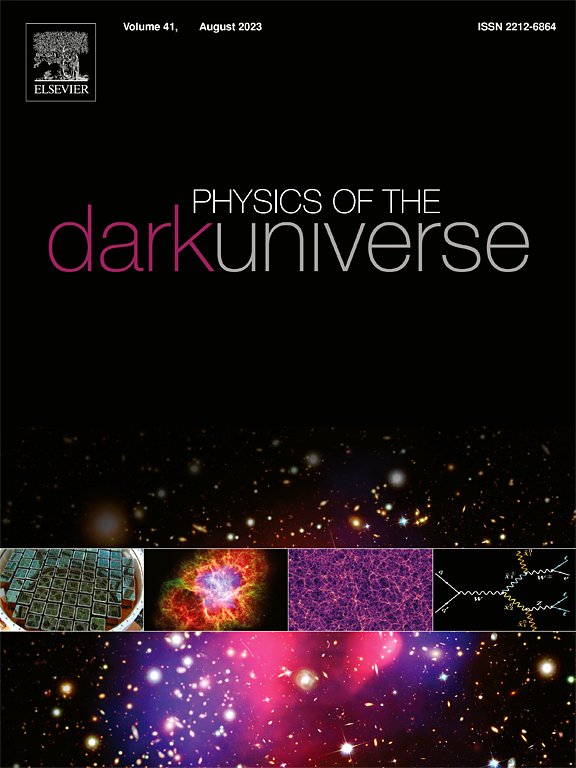Black holes in Lorentz-violating gravity: Thermodynamics, geometry, and particle dynamics
IF 6.4
2区 物理与天体物理
Q1 ASTRONOMY & ASTROPHYSICS
引用次数: 0
Abstract
We investigate the thermodynamics, topology, and geometry of black holes in Lorentz-violating gravity. Modifications in the theory by perturbative parameter lead to coupled changes in horizon structure and thermodynamic behavior, allowing us to derive generalized universal relations and explore implications for the Weak Gravity Conjecture. The thermodynamic topology reveals distinct topological charges, with photon spheres identified as robust topological defects. Our analysis shows that the Ruppeiner curvature remains universally negative across thermodynamic ensembles, indicating dominant attractive interactions among microstructures. This ensemble-independent behavior highlights a fundamental thermodynamic universality in Lorentz-violating settings. Together, these results provide a consistent and rich framework for understanding black hole microphysics and gravitational consistency in modified theories. We further study the motion of timelike test particles in these black hole spacetimes by analyzing the effective potential shaped by the Lorentz-violating couplings. The resulting dynamics reveal the existence of bound orbits and stable circular trajectories, with the location of the innermost stable circular orbit and turning points significantly influenced by the parameters , and the cosmological constant. Numerical simulations of trajectories in the , and 3D planes show precessing, bounded, and plunging orbits, depending on the particle’s specific energy and angular momentum. These results highlight how Lorentz-violating effects alter the structure of geodesic motion and provide potential observational signatures in the dynamics of massive particles near black holes.
违反洛伦兹引力的黑洞:热力学、几何和粒子动力学
我们研究了违反洛伦兹引力下黑洞的热力学、拓扑和几何。微扰参数对理论的修正导致了视界结构和热力学行为的耦合变化,使我们能够推导出广义的普遍关系,并探索弱引力猜想的含义。热力学拓扑揭示了不同的拓扑电荷,光子球被确定为鲁棒拓扑缺陷。我们的分析表明,Ruppeiner曲率在整个热力学系综中仍然普遍为负,表明微观结构之间的吸引相互作用占主导地位。这种与系综无关的行为突出了洛伦兹违反情况下热力学的基本普遍性。总之,这些结果为理解修正理论中的黑洞微物理和引力一致性提供了一致和丰富的框架。通过分析洛伦兹-违反耦合形成的有效势,我们进一步研究了类时测试粒子在这些黑洞时空中的运动。由此得到的动力学结果揭示了束缚轨道和稳定圆轨道的存在,其中最内层稳定圆轨道和拐点的位置受参数1、2和宇宙学常数的显著影响。在x - y,x - z和3D平面上的轨迹的数值模拟显示了根据粒子的比能量和角动量的进动,有界和坠入轨道。这些结果突出了洛伦兹违反效应如何改变测地线运动的结构,并为黑洞附近大质量粒子的动力学提供了潜在的观测特征。
本文章由计算机程序翻译,如有差异,请以英文原文为准。
求助全文
约1分钟内获得全文
求助全文
来源期刊

Physics of the Dark Universe
ASTRONOMY & ASTROPHYSICS-
CiteScore
9.60
自引率
7.30%
发文量
118
审稿时长
61 days
期刊介绍:
Physics of the Dark Universe is an innovative online-only journal that offers rapid publication of peer-reviewed, original research articles considered of high scientific impact.
The journal is focused on the understanding of Dark Matter, Dark Energy, Early Universe, gravitational waves and neutrinos, covering all theoretical, experimental and phenomenological aspects.
 求助内容:
求助内容: 应助结果提醒方式:
应助结果提醒方式:


